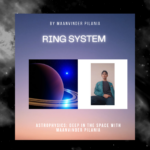Podcaster: Maanvinder Pilania

Title: A Journey to TOI 849b
Organization: Astrophysics: Deep In The Space
Link:
- E-mail: contact.maanvinderpilania@gmail.com
- Instagram:- https://instagram.com/maanvinderp/
- Twitter:- https://twitter.com/MaanvinderP/
- Anchor podcast: https://podcasters.spotify.com/pod/astromaanvinder/
- SoundCloud:- https://soundcloud.com/astromaanvinder
- Website:- https://astromaanvinderpilania.wordpress.com
Description
TOI 849b is an exoplanet located about 730 light years away from Earth. Due to its close proximity to its star the atmosphere of this exoplanet was blasted away by its host star, leaving behind a naked core. This is the first ever planetary core discovered by astronomers.
Bio: My name is Maanvinder Pilania, a student and writer.
Today’s sponsor: Big thanks to our Patreon supporters this month: Rob Leeson, David Bowes, Brett Duane, Benett Bolek, Mary Ann, Frank Frankovic, Michael Freedman, Kim Hay, Steven Emert, Frank Tippin, Rani Bush, Jako Danar, Joseph J. Biernat, Nik Whitehead, Michael W, Cherry Wood, Steve Nerlich, Steven Kluth, James K Wood, Katrina Ince, Phyllis Foster, Don Swartwout, Barbara Geier, Steven Jansen, Donald Immerwahr
Please consider sponsoring a day or two. Just click on the “Donate” button on the lower left side of this webpage, or contact us at signup@365daysofastronomy.org.
Please visit our Patreon page: https://www.patreon.com/365DaysOfAstronomy
or you can consider to sponsor a day of our podcast : https://cosmoquest.org/x/365daysofastronomy/product/sponsor-an-episode-of-365-days-of-astronomy/
Transcript:
Hello and welcome back to the 365 Days of Astronomy. This is Maanvinder Pilania your host, here to take you on a journey to a world in this cosmos whose atmosphere was blasted away by its host star and so what remains now is a naked core of a gas giant. Guess which exoplanet I’m talking about. Nah, I’m not going to spill that easily, you will have to listen it and find out yourself.
Exoplanets are the worlds that orbits stars other than the Sun. They come in different verities. Some are gaseous while some are rocky. Some are way too big while some are small. So far 5000 plus exoplanets have been confirmed and many are waiting for their confirmation.
Did you know there’s a word in astronomy for exoplanets whose atmosphere is stripped away by their host stars? They are called chthonian planets. The exoplanet I’m going to tell you about belongs to this category of planets. So let’s get started!!
Located around 730 light years away from Earth, TOI-849b was discovered in November 2020 by NASA’s Transiting Exoplanet Survey Satellite (TESS) using a method called Transit. In this method, TESS looked for a dip in the light coming from the stars. If a planet passes directly between the star and the observer’s line of sight, it blocks out a tiny portion of light coming from the star. A study was conducted by the team lead by Dr David Armstrong from the University of Warwick’s Department of Physics. It was found that due to its close proximity to its star, the atmosphere of this exoplanet was blasted away leaving behind a naked core with no atmosphere. The planet orbits so tightly to its star that a year on TOI-849b lasts less than a day. TOI-849b is half the mass of Saturn and has scorching temperature of 1500 degrees Celsius. For comparison, Venus is 471 degrees Celsius hotter.
About the size of Neptune, this exoplanet appears to have a little or no atmosphere. The reason behind this could be photo-evaporation, which is the stripping away of atmosphere by the intense radiation from its star. This is the first ever planetary core found by the astronomers & will help astronomers in understanding the evolution of exoplanets.
So what about a trip to this exoplanet? Taking its distance in account it would take a person travelling at the speed of Voyager spacecraft 13 million years to get there. While if we increase our speed, what about the speed of light? Then it’s just a trip of 737 years to TOI-849b. Still feeling betrayed by me, I’m sorry to say you will never get there!!
Further Reading:-
https://astromaanvinderpilania.wordpress.com/365-astr0/365-4/
https://exoplanets.nasa.gov/exoplanet-catalog/7643/toi-849-b/
End of podcast:
365 Days of Astronomy
=====================
The 365 Days of Astronomy Podcast is produced by Planetary Science Institute. Audio post-production by Richard Drumm. Bandwidth donated by libsyn.com and wizzard media. You may reproduce and distribute this audio for non-commercial purposes.
This show is made possible thanks to the generous donations of people like you! Please consider supporting to our show on Patreon.com/365DaysofAstronomy and get access to bonus content.
After 10 years, the 365 Days of Astronomy podcast is entering its second decade of sharing important milestone in space exploration and astronomy discoveries. Join us and share your story. Until tomorrow! Goodbye!

